Via Dolorosa
Via Dolorosa, which means “Way of Grief”, is a street believed to be the path where Jesus walked to Golgotha (where the present-day Church of the Holy Sepulchre is) with the Cross.
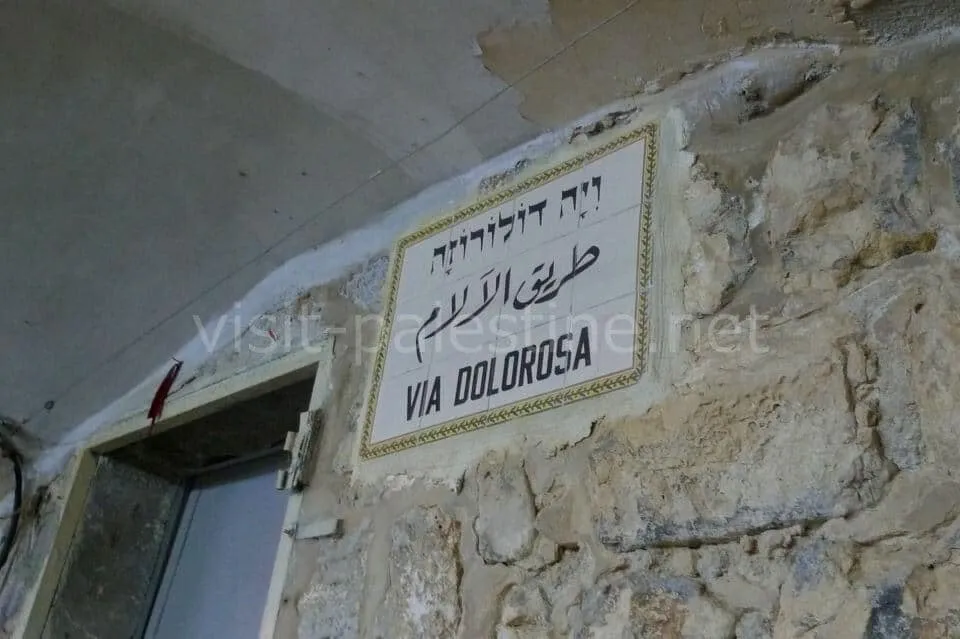
There are 14 stations on the about 1km path; the pilgrims think about Jesus’ story while stopping at each station.
Every Friday at 3:00 pm, Franciscans lead a procession through the Via Dolorosa route from the first station. Hundreds of Christians join in it every time.
The 1st station: Trial by Pilate
Madrasa al-Omariya (Umariya Elementary School)
Pontius Pilate was the fifth prefect of the Roman province of Judaea. He condemned Jesus to death at this place.
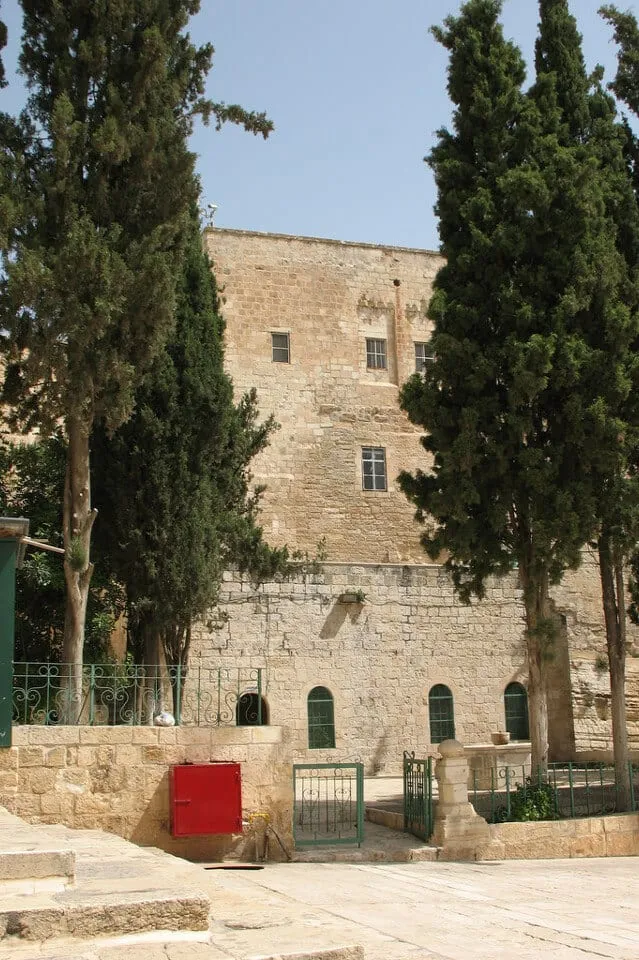
Though it’s believed that Jesus was sentenced here where the Antonia Fortress was, the latest research says it was near the Jaffa Gate.
The 2nd station: Jesus carries the cross and gets flogged
Chapel of the Flagellation
Jesus was forced to carry the cross and a spine crown on his head, then get flogged by the Roman soldiers.
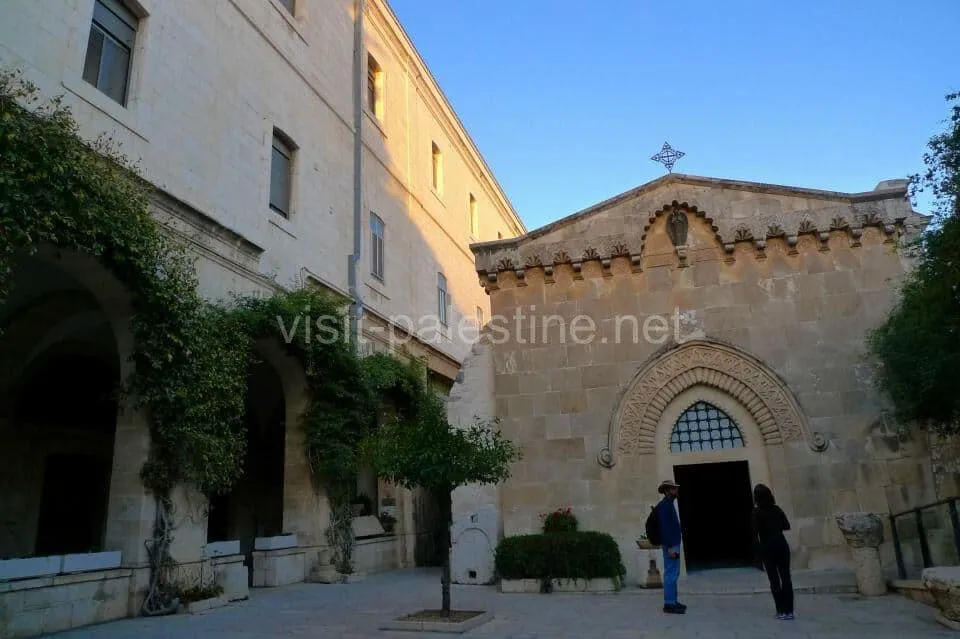
The stained glass shows that story, and also the dome is representing a crown of thorns.
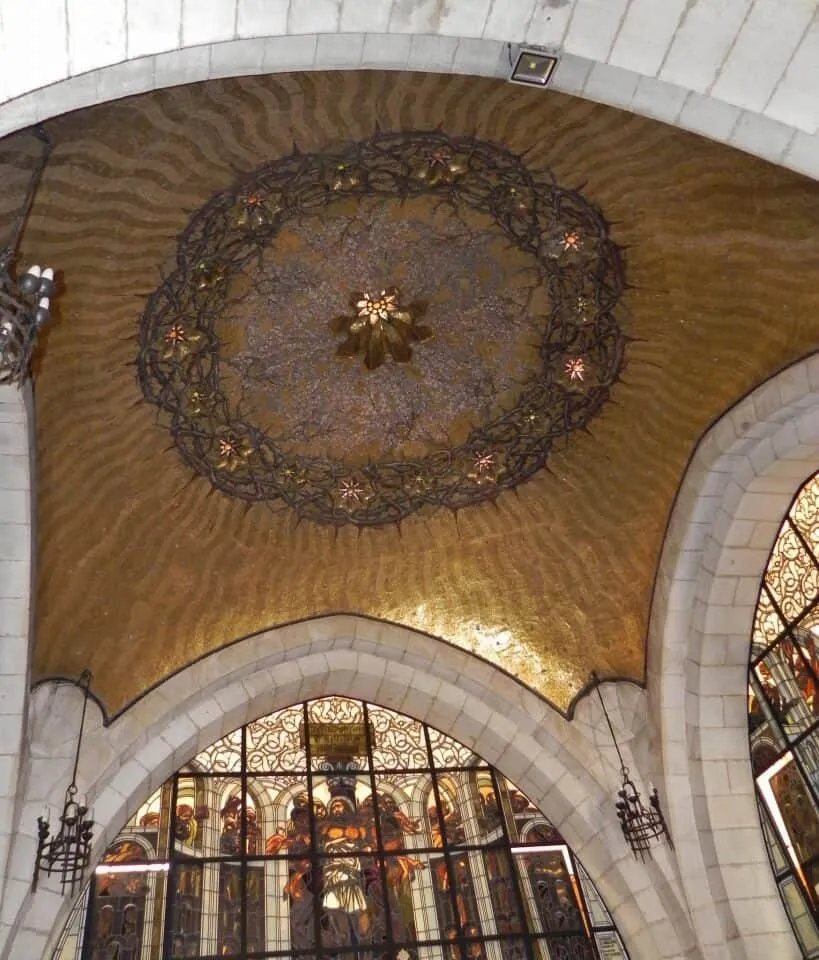
On the way to the third station, there is the Ecce Homo Church with its famous arch crossing the Via Dolorosa outside.
Pontius Pilate called “Ecce Homo”, “behold the man” in Latin, to present Jesus to the public.
The 3rd station: the first fall
Jesus falls at the present-day Armenian chapel at the junction of Via Dolorosa and al-Wad street.
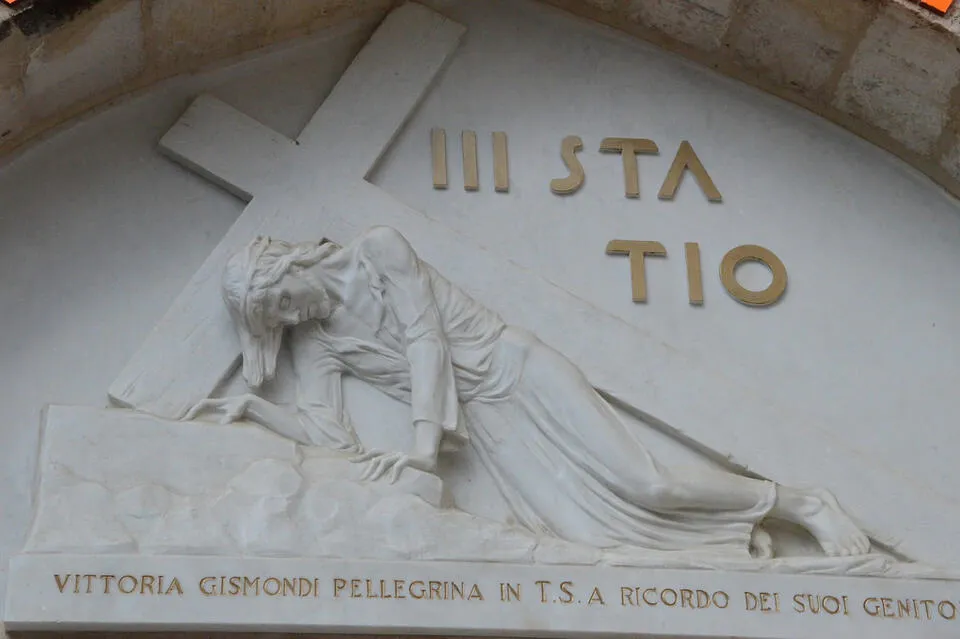
However, there is no description in Gospel that Jesus fell.
The church was built in the 19th century by the Armenian Catholics.
The 4th station: Jesus meets his mother
Armenian Church of Our Lady of the Spasm
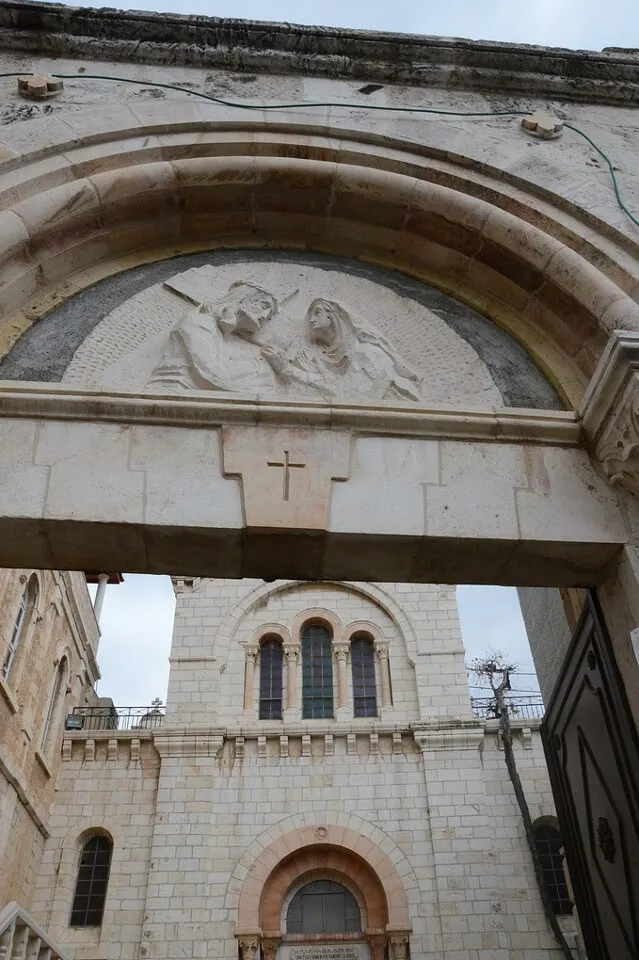
Mary saw her son here with the cross on his back.
The 5th station: Simon of Cyrene takes Jesus’ cross
Simon was a Jewish pilgrim who came to Jerusalem from Cyrene, a city in present-day Libya.
He was eventually forced to take the cross on his back by the Roman soldiers.
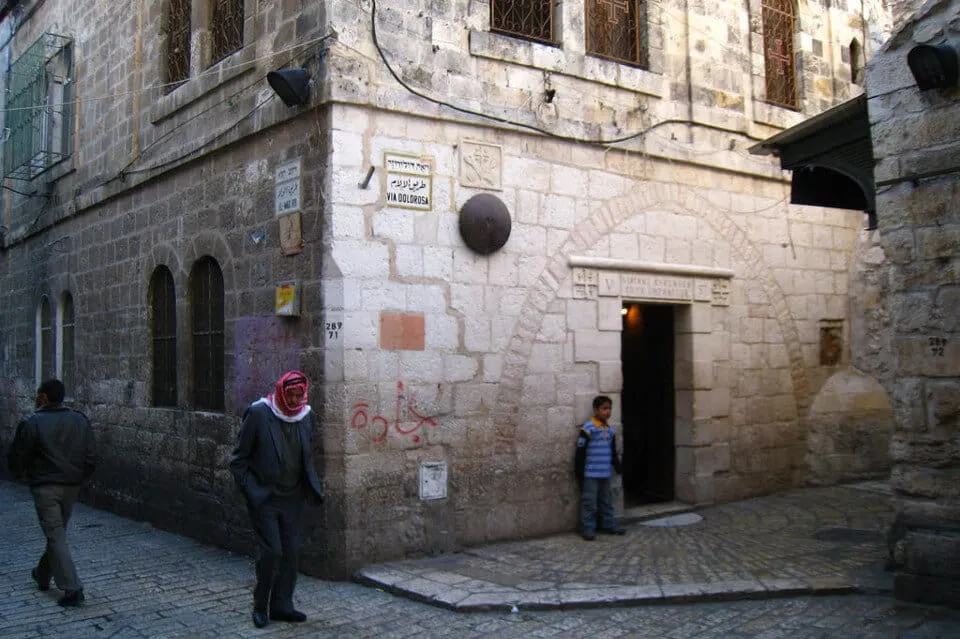
And they compel one passing by, Simon of Cyrene, the father of Alexander and Rufus, coming from the country, that he might carry His cross.
Mark, chapter 15:21
The 6th station: Veronica wipes the sweat of Jesus
It is believed that this is where Veronica wipes the face of Jesus with a cloth; when Jesus returns the cloth, his face comes up to its surface.
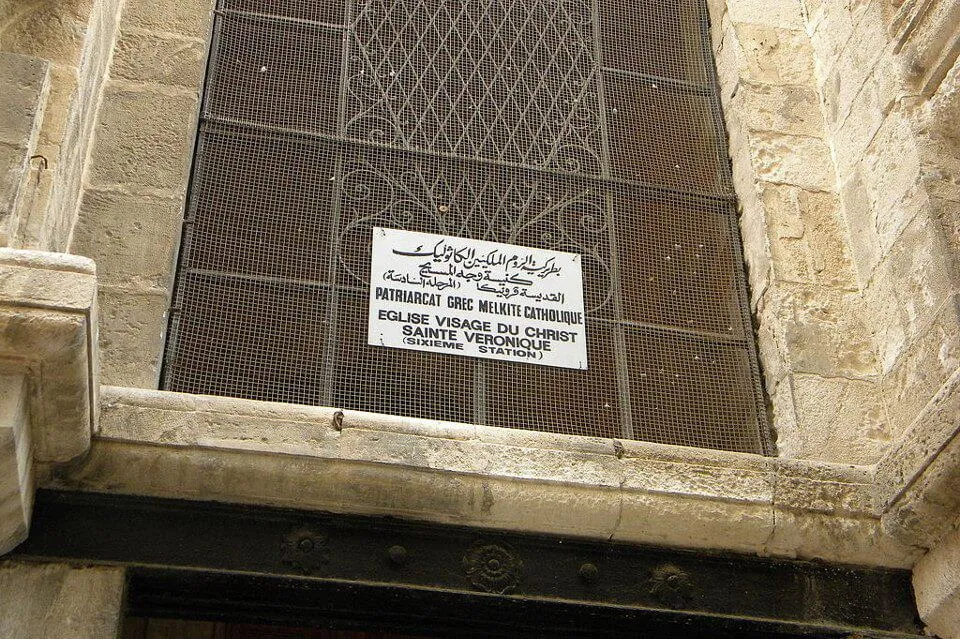
The cloth, “Veil of Veronica” is said to be kept in Saint Peter’s Basilica in the Vatican. As the veil was copied so much until the Middle Ages, we can never know which or what is the truth.
The 7th station: the second fall
Jesus passes through the Gate of Judgment where the name of the accused is posted.
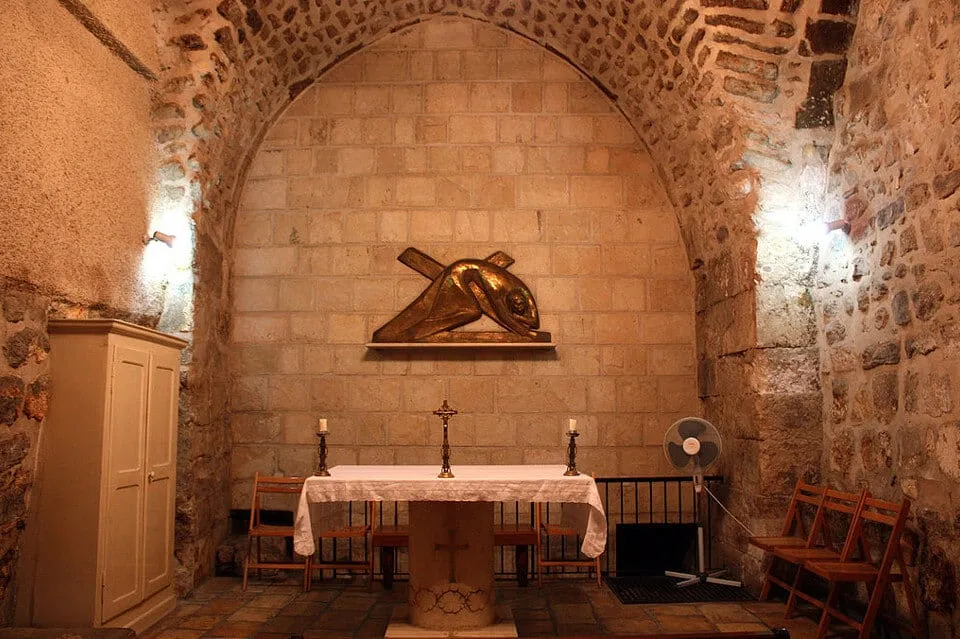
The rampart ended here at that time; Jesus heads up to Golgotha out from the gate.
The 8th station: Jesus meets pious women
On the way to Golgotha, Jesus consoles pious women.
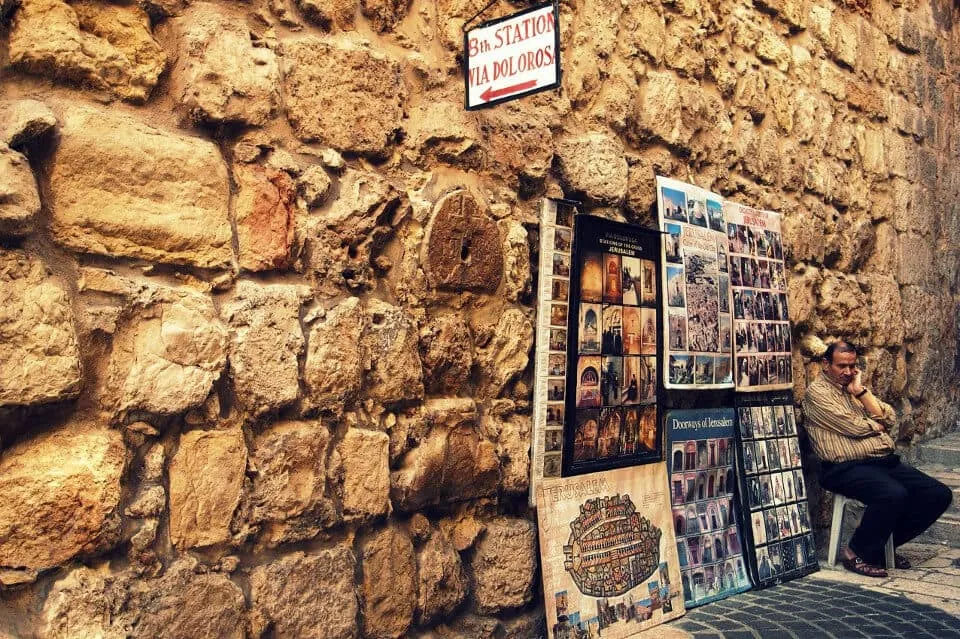
A large number of people followed him, including women who mourned and wailed for him. Jesus turned and said to them, Daughters of Jerusalem, do not weep for me; weep for yourselves and for your children.
Luke 23:27-28
The 9th station: the third fall
The ninth station is on the northeastern wall of the Church of the Holy Sepulcher, at the entrance of the Coptic Church of St. Helen.
It is on a narrow path, down to the south through Suq Khan Al-Zeit st. lead from the Damascus Gate, then up to the stairs to the west.

There is, however, no description in the Gospels about the third fall.
The 10th station: Jesus is stripped of his garments
The Church of the Holy Sepulchre
The tenth station is at the small chapel, right next to the entrance of the Church of the Holy Sepulchre.
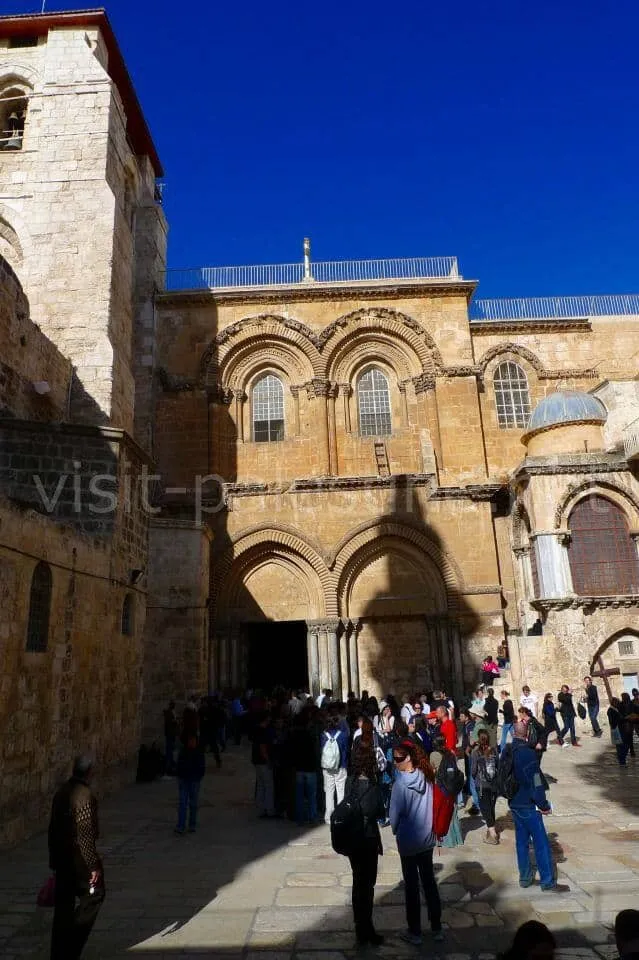
Jesus is stripped of his garments by Roman soldiers.
When they had crucified him, they divided up his clothes by casting lots. And sitting down, they kept watch over him there.
Matthew 27:35-36
The 11th station: Jesus is nailed to the cross
The eleventh station is located in a chapel of the Church of Holy Sepulchre next to the tenth station.
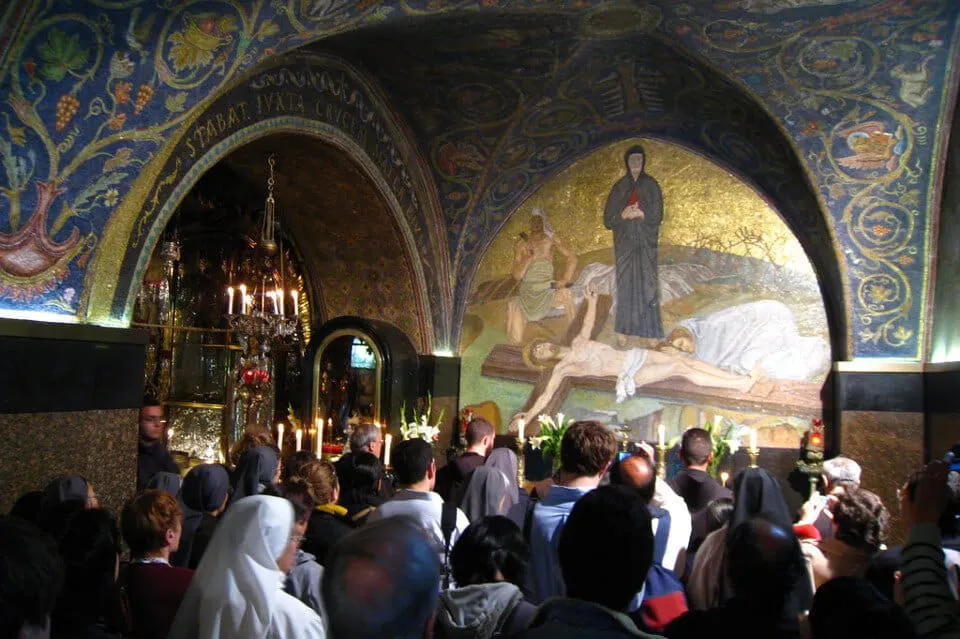
The fresco at the altar shows Jesus is just about to be crucified.
The 12th station: Jesus dies on the cross
The twelfth station is the point to be said that Jesus dies on the cross.
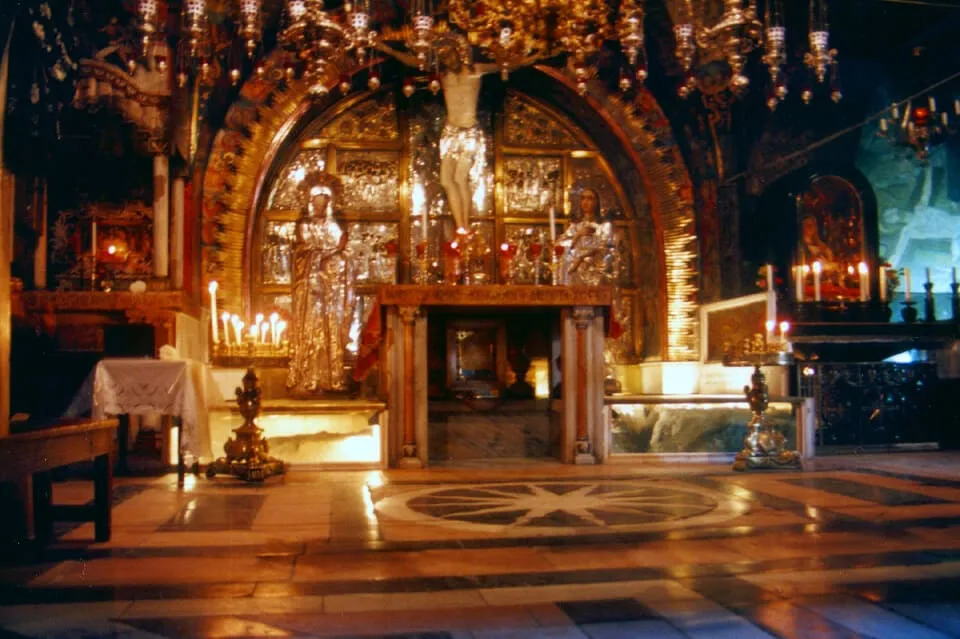
You can find the point where the cross was raised.
The 13th station: Mary takes His corpse
Between the 11th and the 12th stations, there is the Stabat Mater altar.
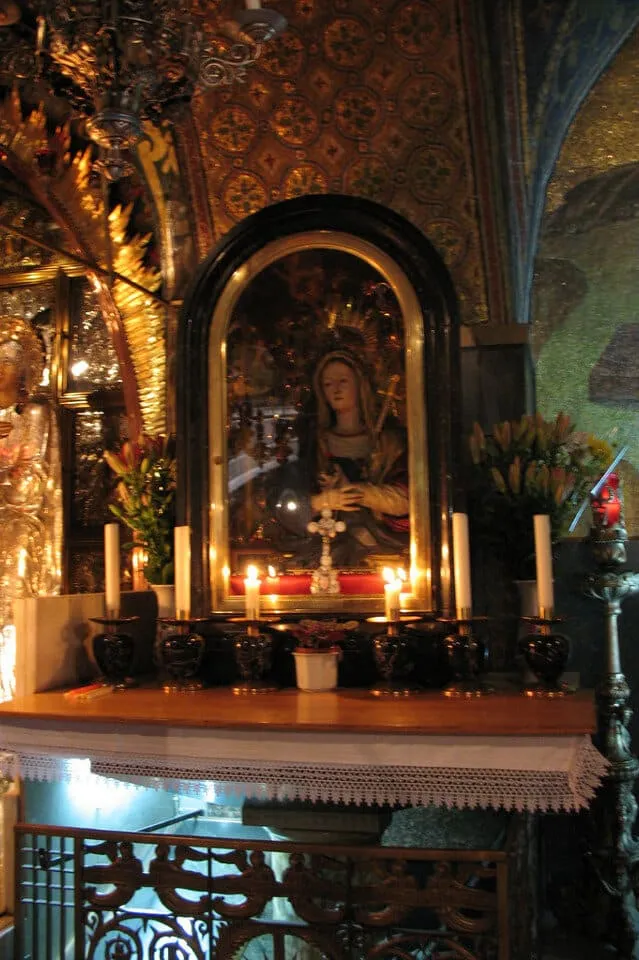
At the entrance of the Church of the Holy Sepulchre (where the bottom of the Golgotha (Calvary) was), there is the Stone of the Anointing. You can find it after coming back from the twelfth station.
The 14th station: His body is laid in the tomb
The last stop of Via Dolorosa is His tomb. The gravestone was put in a small chapel of the Church of the Holy Sepulchre.
This chapel is so tiny that there is always a long queue.
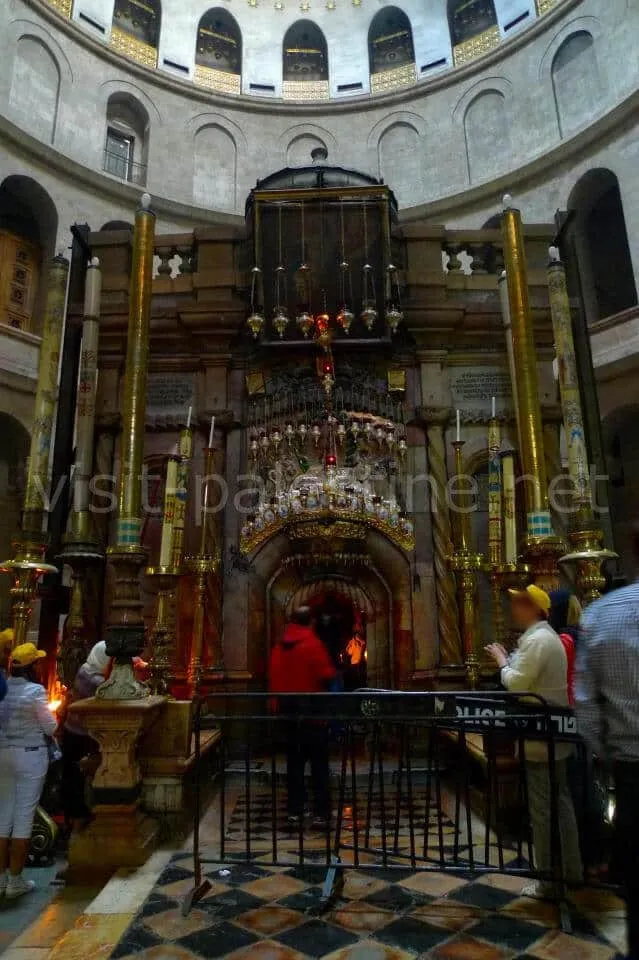
According to the Gospels, this place belonged to Joseph of Arimathea.
As evening approached, there came a rich man from Arimathea, named Joseph, who had himself become a disciple of Jesus. Going to Pilate, he asked for Jesus’ body, and Pilate ordered that it be given to him. Joseph took the body, wrapped it in a clean linen cloth, and placed it in his own new tomb that he had cut out of the rock. He rolled a big stone in front of the entrance to the tomb and went away.
Matthew 27:57-60